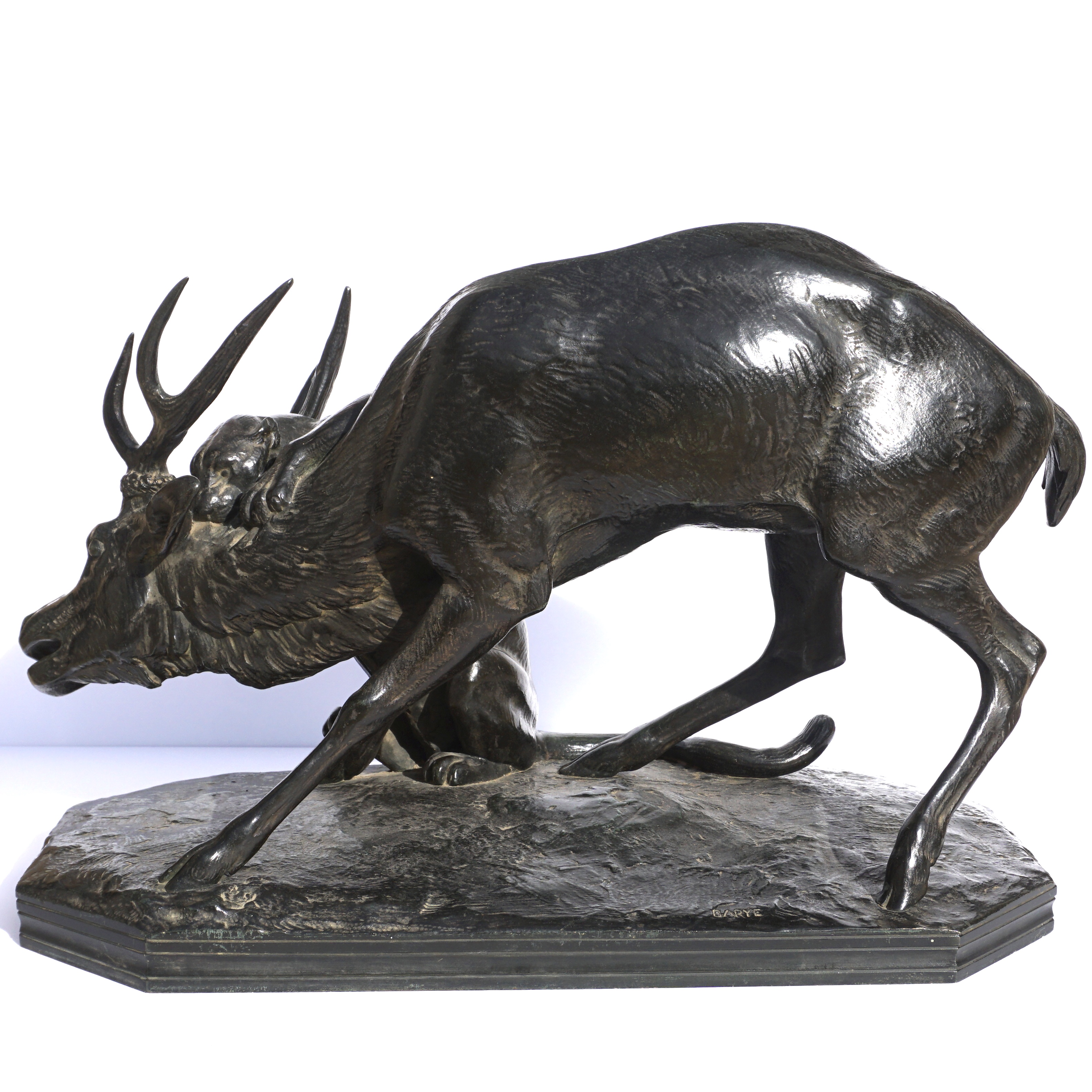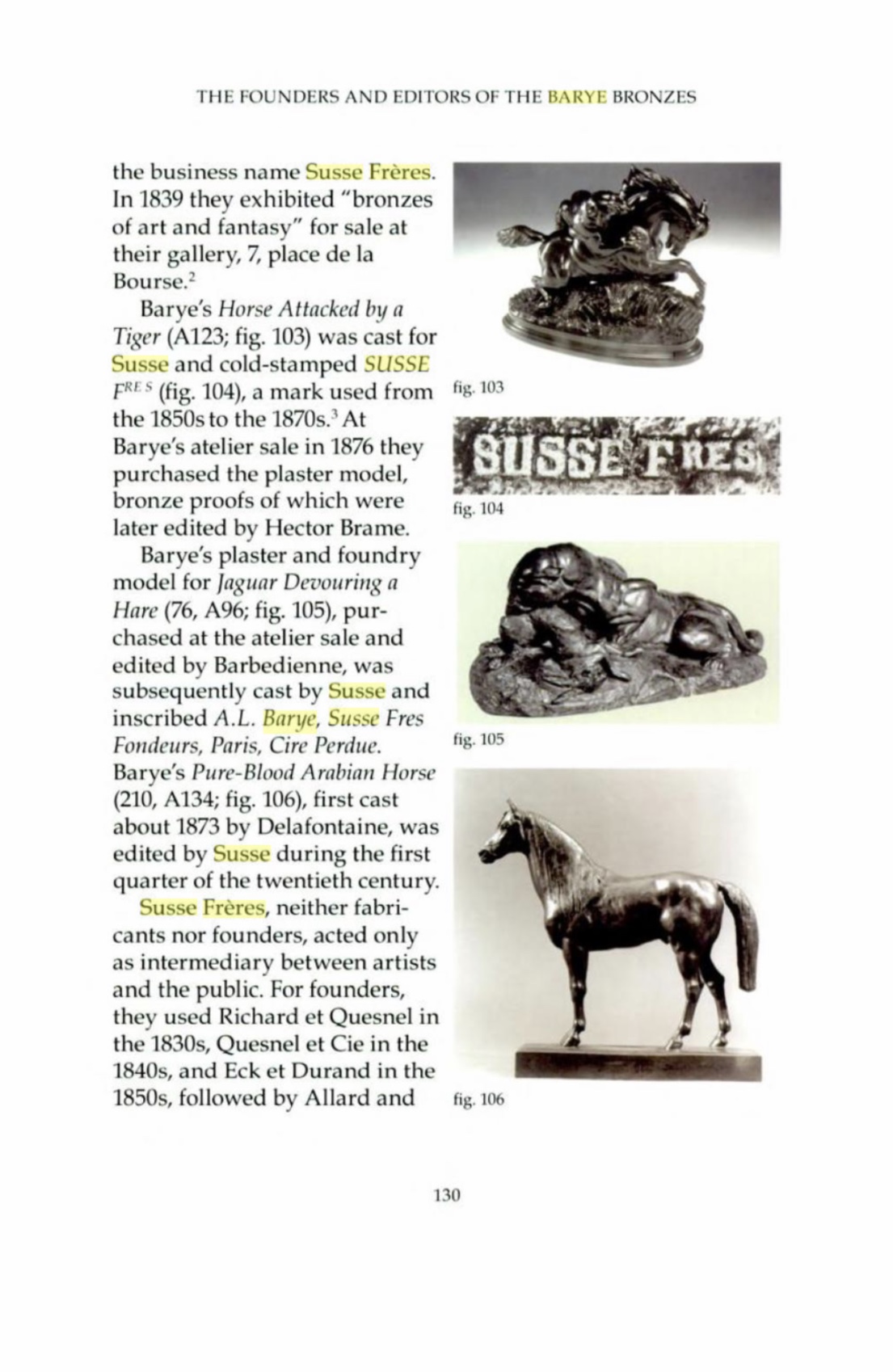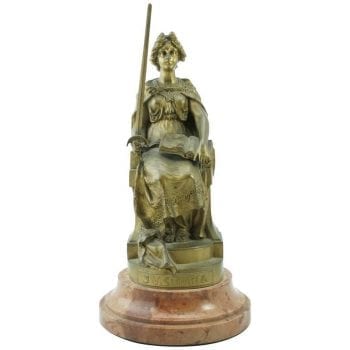Description
Antoine-Louis Barye (FRENCH, 1795-1875)
Panthère saisissant un cerf (Panther seizing a stag)
Signed: “BARYE”
Stamped: Susse Fres
Bronze, dark-green/black patina
Measures: Height12.75 In. (32.4 cm.) Width 21 Inches Depth 10.5
Provenance: Modeled in 1829. Barye sold this model (Stag with Panther) tp Susse with all rights of production and it was first offered for sale by Susse in 1944. This particular model was made between 1850s through 1870; hence circa 1860 determined by the exact Susse Fres stamp on side. Research docs are pictured.
The unrestrained violence of animals evoked a powerful response from the Romantics who saw them as embodiments of instinct as opposed to reason. In animal combat they saw the most elemental struggle of all, the struggle for survival. Géricault and Delacroix were painters who explored this facet of French Romanticism most deeply; Bayre was the quintessential Romantic sculptor.
Antoine-Louis Barye was the foremost animal sculptor of the 19th century. This and two more bronzes in the exhibition capture the frenzy of the predators and the terror of their prey during stirring combat. Barye, who combined in his work profound knowledge of classical art with a precision in rendering anatomy, was fascinated by the unrestrained violence of animals. He drew from life at the menagerie of the Jardin des Plantes in Paris and studied dissected specimens. He often used watercolors as preparatory studies for his sculptures. In the late 1830s,
Barye started to cast his bronzes serially. The production continued after his death and into the 20th century. Barye’s contemporaries were Jules Moigniez, Pierre Jules Mene, Delabrierre, Fratin and Charles Paillet.

















